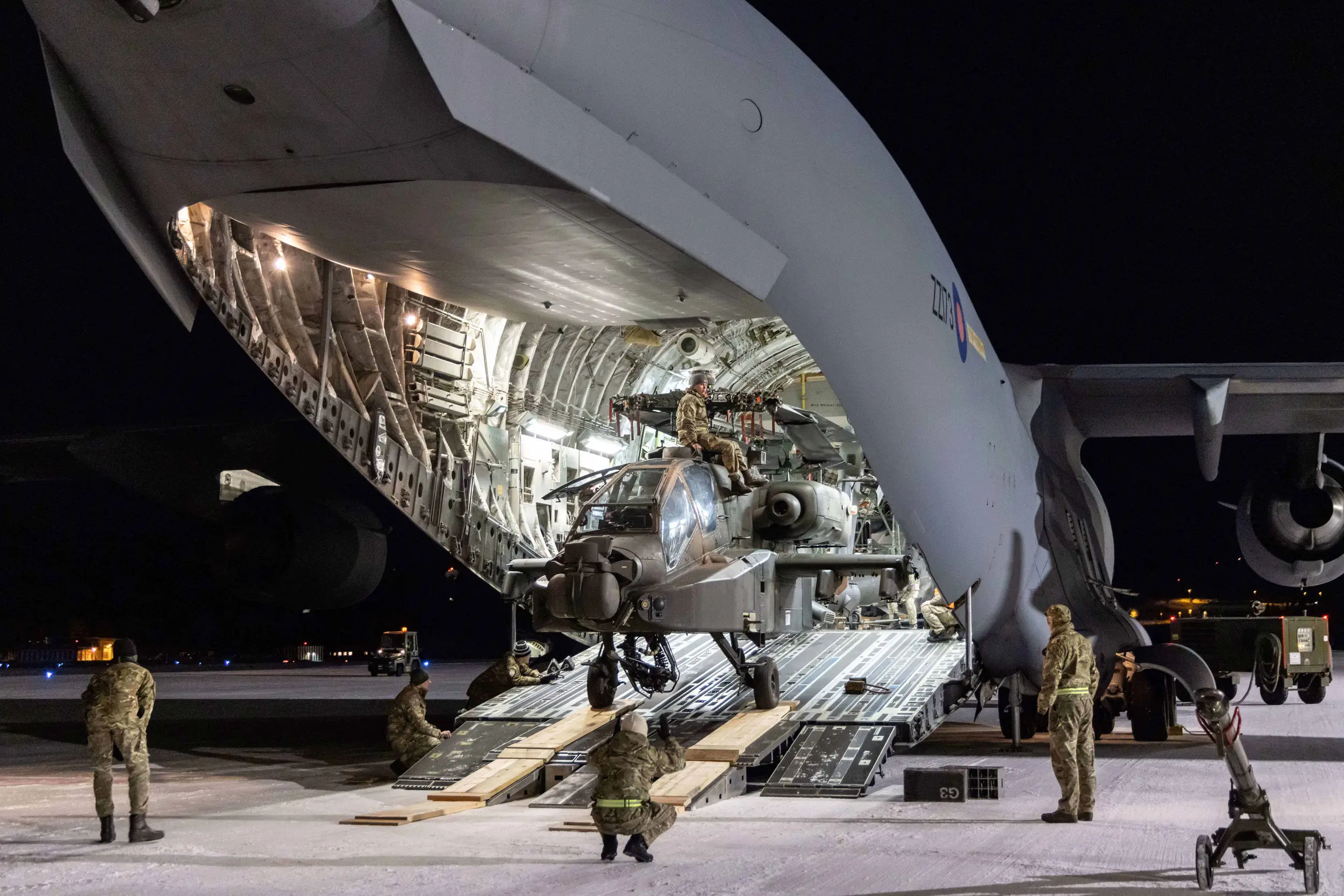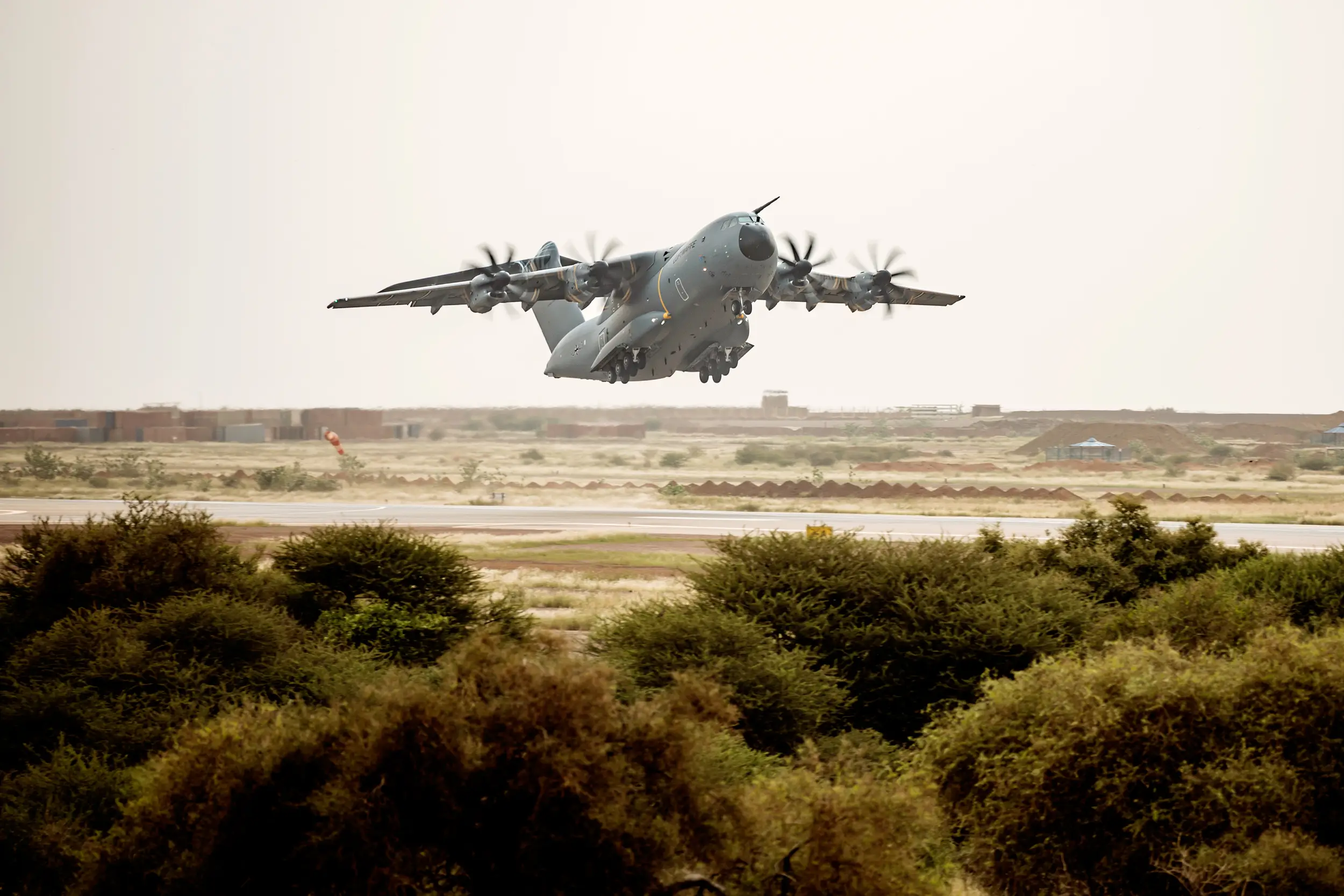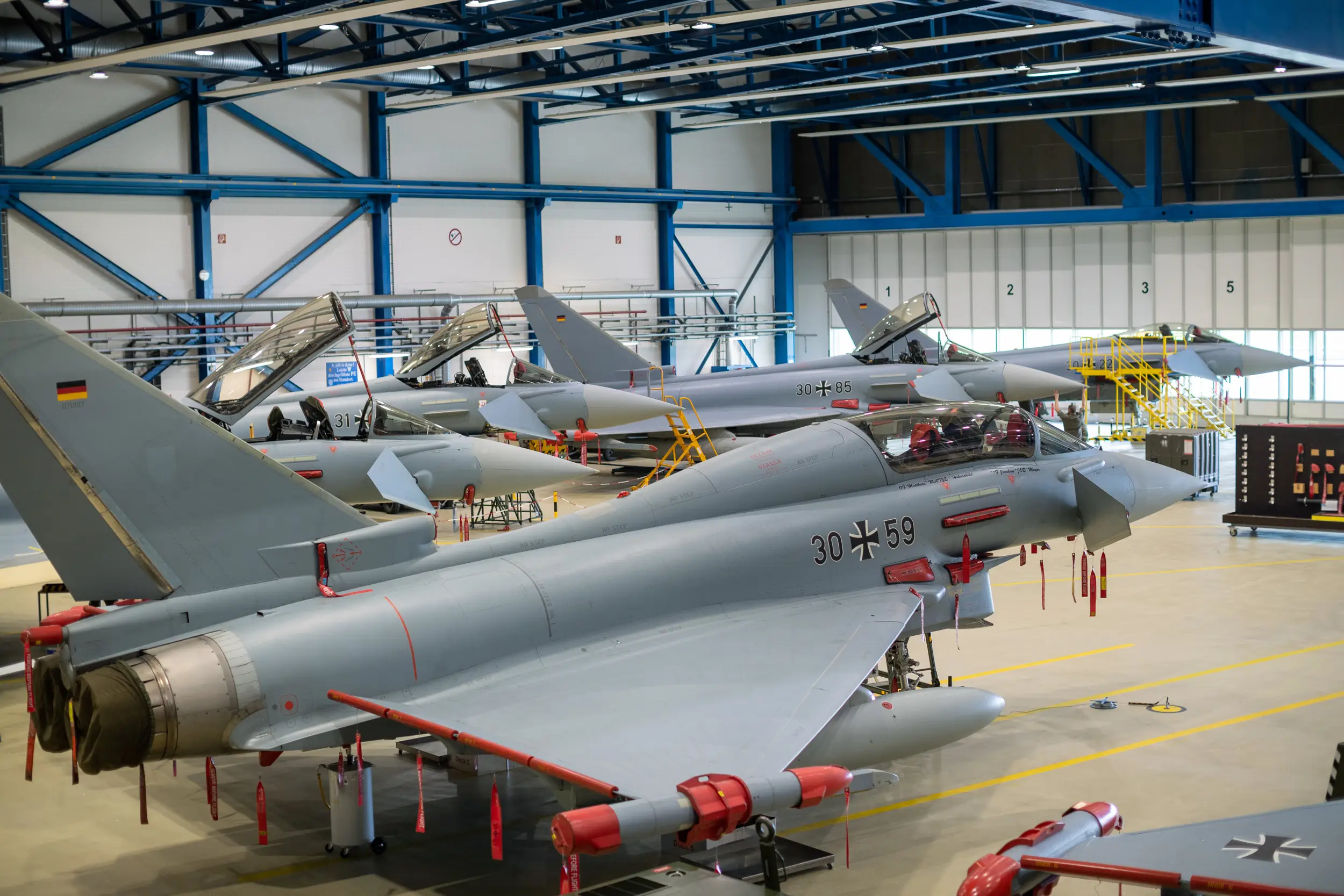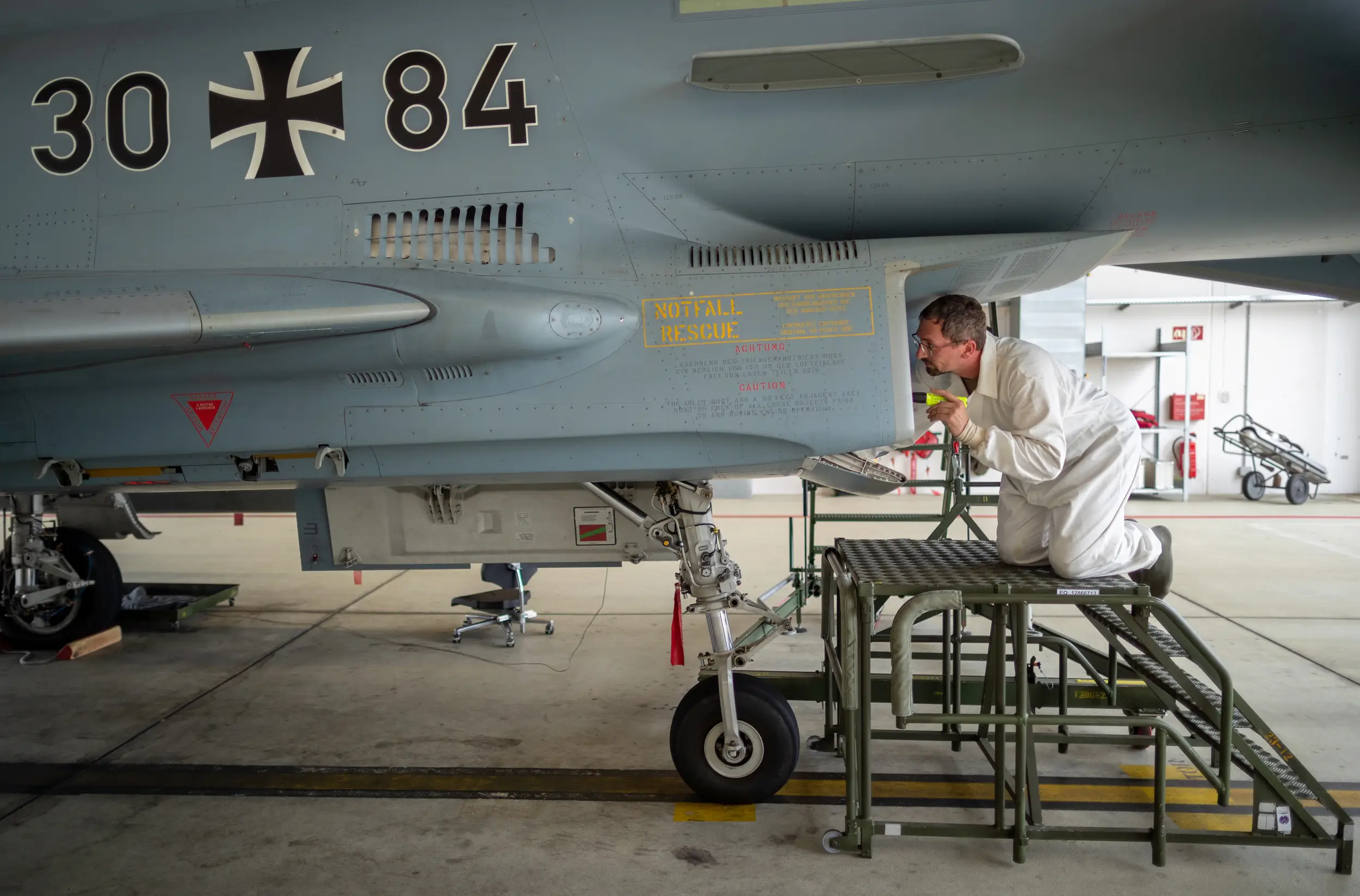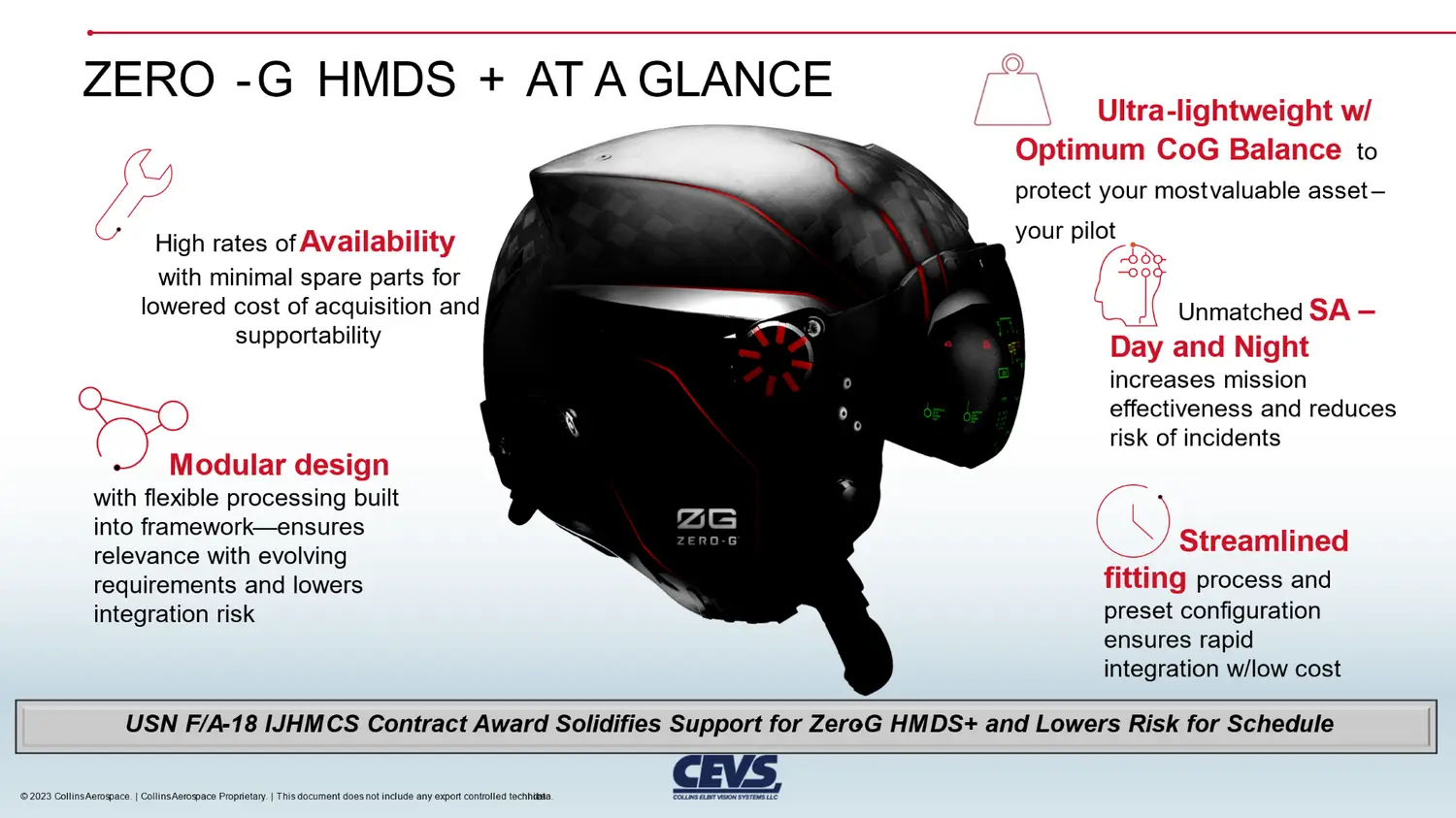READINESS REIMAGINED > SUSTAINMENT AND SUPPORT IN AN UNPREDICTABLE WORLD
studio | READINESS REIMAGINED | CHAPTER 3
The shift towards localised service hubs in global military logistics marks a significant evolution, boosting efficiency and readiness. This approach, exemplified by leading industry players, tackles logistical challenges and streamlines international supply chains for militaries worldwide.
A Royal Air Force C-17 globemaster transports an Army Air Corps Apache helicopter to Norway as part of Exercise Nordic Response 24, testing allied logistics and supply chains. Royal Air Force image.
NATO nations and their allies often rely on international supply chains, particularly for larger programmes. For sustainment experts such as Collins Aerospace, an RTX busienss, this demands a global perspective, boosting readiness and easing logistics headaches for militaries – no matter their location.
Collins Aerospace operates across various sites worldwide, with five major service centres in the US and Germany. It expects to have bases in as many as nine different countries within the next few years, noted Steve Griffin, Director of Integrated Product Support at Collins Aerospace.
However, the company works with customers in other nations beyond its service centre bases. For example, a European customer could use the company’s Heidelberg, Germany, or Toulouse, France centres, Griffin said.
‘We have to balance it out to determine who has more bandwidth at that point in time to ensure we get the job done quickly,’ he said. ‘But it’s all part of the same network and part of the same collaborative team.’
Service centres in Germany have been maintaining NATO aviation and extending life cycles for key platforms. Bundeswehr image.
Optimising Service Centre Locations for Better Sustainment
Michael Nelson, Collins Aerospace’s Associate Director for Military Avionics Service Centres, said the company constantly analyses how it can best position its service centres in different regions to boost repair times and sustainment effectiveness for the widest possible range of customers.
For example, it is looking at the possibility of a “hub and spoke” arrangement, whereby the German service centre, for instance, would sit as a European hub, supported by smaller spokes across the continent and into the Middle East and beyond.
Such a move would address a range of logistical problems for such customers. For example, currently, customers may need to send their US-produced equipment to service centres in that country for repairs.
This creates challenges around time and expense and can produce logjams around import/export regulations or the Defense Priorities & Allocations System (DPAS), under which US military sustainment demand will take priority over that of another nation.
Eurofighter jets of Tactical Air Force Squadron 73 undergo pre-flight checks to maintain readiness. Bundeswehr image.
Performance-Based Logistics and Local Service Benefits
Holger Eckstein is Senior Manager – Value Stream Management, Military Services at Collins Aerospace’s Heidelberg facility and is responsible for all the site’s Eurofighter Typhon-focused work.
Eckstein noted the benefits a regional service centre offers German and European customers, particularly through such approaches as performance-based logistics (PBL), whereby service specialists like Collins Aerospace provide repairs and other support to ensure a specified availability.
For example, it is often the case that service engineers encounter a “no fault found” scenario: they receive an indication that a part may be faulty, remove it, put it through a “go/no go test”, and figure out if it is damaged or not; if not, the problem must lie elsewhere, and the part can be placed back inside the platform in question.
‘If you do not have this capability on-site, you must send the item to a service centre. If it has to be processed like a repair, that means that item will be away [for a substantial period]’, Eckstein said.
The potential impact is obvious if a European customer had to pursue this process through a US-based centre rather than a regional facility.
‘If it is a German or European customer, it certainly makes sense to use Collins Germany as their hub,’ he noted. ‘Even if we have to go through testing and so on, the turnaround time will be certainly much faster than if we have to send it to the US.’
Regional service centre Hubs like Heidelberg in Germany ensure that allies accross the world have quick access to the sustainment services critical to force readiness. Bundeswehr image.
Streamlining Processes for International Customers
He noted that avoiding the time and expense involved with this and the potential for delays due to DPAS or other restrictions are key goals for Collins and military customers. ‘They highlight it every time – they want to have as much capability on our side as possible,’ Eckstein said.
How is Collins Aerospace working to ease the process for its customers worldwide? Chris Norris, Director of Military Service Programmes Within Avionics at Collins Aerospace, noted that logistics is more convenient within a given region – such as Europe – than between Europe and the US when it comes to spares and repairs and other sustainment demands.
He said that as Collins partners with customers and looks to PBL, it also looks to the potential for building local asset pools. By pre-placing such components, the customer does not need to deal with the challenges of US restrictions or the lead times and expenses involved with a transatlantic sustainment process.
‘We completely eliminate those turnaround times getting back to the States and significantly reduce the amount of paperwork that’s needed to get things in and out,’ he said.
‘If a customer is interested, we can forward deploy asset pools to the region, to completely eliminate those times getting back to the States and significantly reduce the amount of paperwork that’s needed to get things in and out.’
US Navy Embraces Collins Zero-G HMDS+ for Enhanced Sustainment and Pilot Performance
The Collins Zero-G HMDS+ significantly advances aircraft sustainment and pilot effectiveness.
Developed with sustainability and life cycle cost optimisation in mind, this system from Collins Aerospace and Elbit Systems of America, under their joint venture Collins Elbit Vision Systems (CEVS), emphasises expedited repair times with lower sustainment costs due to its modular design. The helmet design allows for easy fitting and local repairs.
The recent $16 million contract awarded by the US Navy for the Improved Joint Helmet Mounted Cueing System highlights the Zero-G HMDS+ as a vital component for the F/A-18 and E/A-18G aircraft.
This approach enables the rapid integration of next-generation technologies as they emerge. The design is intended to optimise situational awareness to improve decision speed and accuracy to maximise survivability and ultimately, ensure mission success.
